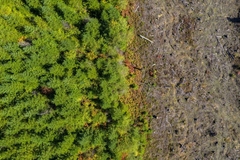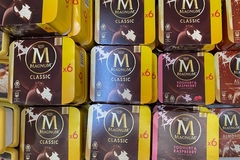
- Industry news
Industry news
- Category news
Category news
- Reports
- Key trends
- Multimedia
- Journal
- Events
- Suppliers
- Home
- Industry news
Industry news
- Category news
Category news
- Reports
- Key trends
- Multimedia
- Events
- Suppliers
Using Fallen Autumn Leaves for Food Nutrition and Color

02 Nov 2016 --- Finnish researchers may have found a new use for colorful autumn leaves that fall and dry on the ground at this time of year - by extracting the natural compounds and using them as food coloring, preservatives and nutritional supplements. Nordic research and technology company, VTT Technical Research Centre of Finland, says that natural pigments and useful raw material from the autumn leaves can be transformed into use for the food industry as well as feed, cosmetics and textiles.
Autumn leaves derive their color from orange and yellow carotenoids and red anthocyanins. In addition to pigments, autumn leaves contain many beneficial compounds, such as phenols, lignin, carbohydrates and protein. There is a fast-growing need for natural pigments in various industries around the world and these natural pigments can even have health-promoting effects and use as nutraceuticals, according to VTT.

The company has teamed up with a waste disposal firm to collect fallen leaves on the ground all over the parks, gardens and streets of the Otaniemi area of Finland. VTT has developed a process in the lab where leaf material is used. Very little use has been made of fallen leaves so far and they are either left on the ground, composted or burned resulting in full landfills and a growing carbon dioxide load.
Speaking with FoodIngredientsFirst, Liisa Nohynek, Senior Research Scientist, PhD microbiology, explains the need and process, although the precise detail is confidential at the moment. She also stresses that special attention has been paid to the environmental friendliness of the overall process and the safety of the compounds produced.
“This application is very relevant because of the huge increase in need for natural colorants for food. However, autumn leaves from the trees have not been utilized for human nutrition so far, and therefore this material is classified as novel food. This means that certain tests have to be done, and after positive results from those the permission can be applied from EFSA. So this will still take some time,” she says.
“But we do not want to open the process yet. However, in general the process is developed as safe as possible for both environment and human, and therefore we do not use toxic solvents or hazardous treatments.”
“In our process, the protein is developed by microbial fermentation of leaf extraction residue. Therefore, the protein would be SCP (single cell protein) coming from microbes grown on the leaf biomass.”
When FoodIngredientsFirst asked about the food industry reactions to using leaves, Nohynek, added: “With the permission from European Food Safety Authority of using the autumn leaves in food applications, I am convinced that the reaction is positive. Colors from autumn leaves are natural, look natural, and contain healthy components such as carotenoids and anthocyanins.”
Residual biomass, which is remaining after extraction, is high in nutrients and suitable for soil improvement in home gardens. On the other hand, this waste can also be further processed to compounds that inhibit the growth of harmful microbes, thus being suitable e.g. for cosmetic and hygiene products. Nohynek believes that the methods developed by VTT are applicable for raw material processors.
What prompted the research?
“In Finland, autumn is usually very colorful, and in addition to trees the ground is covered with these colorful leaves of yellow, orange, red and brown. I got this idea of utilizing the components of these leaves for several applications last autumn, and I was very happy that our company VTT supported this study. I was lucky to get diverse experts in the project team, and we all have been working very enthusiastically to realize the original idea.”
“Our pilot scale experiments are ongoing, followed by large scale implementation of process products. In addition, we have started commercialization of the processes and the products, Nohynek adds.
by Gaynor Selby










